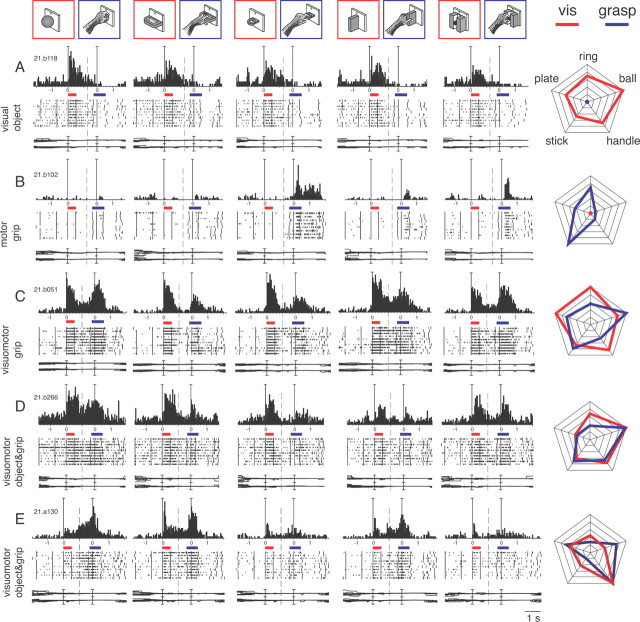Figure 4.
Typologies of selective neurons found in V6A with the Reach-to-Grasp task. Top, objects and types of grips. A, Example of a visual neuron encoding objects. The two colored bars indicate the time of object illumination (red) and reach-to-grasp execution (blue). Activity has been aligned twice, on object illumination and on movement onset. The cell displays visual selectivity for objects but lack of motor responses for either grip. All conventions are as in Figures 1 and 2. Vertical scale on histogram: 43 spikes/s; time scale: 1 tick = 1 s. Eye traces: 60°/division. B, Motor neuron encoding grips. It shows absence of visual responses for all five objects and strong tuning of motor responses. Vertical scale on histogram: 80 spikes/s. C, Visuomotor neuron encoding grips. The strong visual response is not selective for objects, but the motor response is modulated according to the grip performed. Vertical scale on histogram: 70 spikes/s. D, E, Visuomotor neurons encoding objects and grips. Both cells discharge during object vision and R-to-G execution and the visual responses are tuned for objects and the motor discharges are tuned to the different grips, displaying different preferences. Vertical scale on histogram: 80 spikes/s (D), 58 spikes/s (E). Right column: radar plots of the responses of the cells shown in A–E. For radar plots C–E, activity has been normalized for each epoch separately. Correspondence between objects of the corresponding activities is indicated on the top plot. Visual activity, red lines; motor activity, blue lines.

